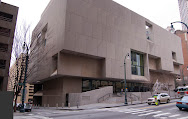October 6, 2009 - This morning in New York, The World Monuments Fund announced its 2010 WATCH LIST, continuing the organization's biennial tradition of of bringing international attention to threatened cultural heritage. 93 sites from 47 countries were chosen, some dating back several centuries, with one in Africa dating back 2 million years. The youngest site to received "at risk" or "threatened" recognition is the Atlanta-Fulton Central Public Library. The building was designed by Bauhaus alumni, Marcel Breuer. Press release follows:
Press Contacts
Holly Evarts, World Monuments Fund, 646-424-9594, or hevarts@wmf.org.
Jeanne Collins & Associates, LLC, 646-486-7050, or info@jcollinsassociates.com.
WORLD MONUMENTS FUND ANNOUNCES 2010 WATCH LIST, INCLUDING DOZENS OF CULTURAL HERITAGE SITES AT RISK IN 47 COUNTRIES
NEED FOR COLLECTIVE ACTION AND SUSTAINABLE STEWARDSHIP
ARE COMMON THEMES
For Immediate Release—
Ranging from the famous (
The 2010 Watch makes it clear that cultural heritage efforts in the 21st century must recognize the critical importance of sustainable stewardship, and that we must work closely with local partners to create viable and appropriate opportunities to advance this,” said Ms. Burnham. “The sites on the 2010 Watch list make a dramatic case for the need to bring together a variety of sectors—economic, environmental, heritage preservation, and social—when we are making plans that will affect us all. Greater cooperation among these sectors would benefit humanity today, while ensuring our place as stewards of the Earth for the next generation.”
Comprising products of individual imaginations, testaments to faith, and masterpieces of civil engineering, among other types of creations, the sites on the 2010 Watch are irreplaceable monuments to human culture. They are found in every type of environment, from urban centers and small towns to barren plains and riverside caves, and they are threatened by war, natural disasters, urban sprawl, and neglect. They range from the prehistoric to the contemporary, and include schools, libraries, municipal buildings, places of worship, roadways, aqueducts, row houses, bridges, gateways, parks, follies, cultural landscapes, archaeological remains, historic city centers, castles, private houses, forts, tombs, and ancient petroglyphs and cave art.
.jpg)

